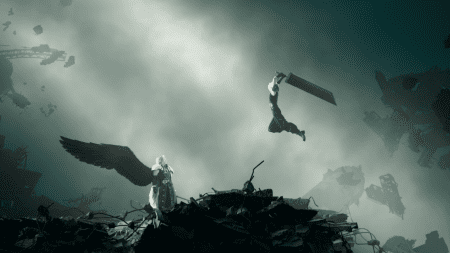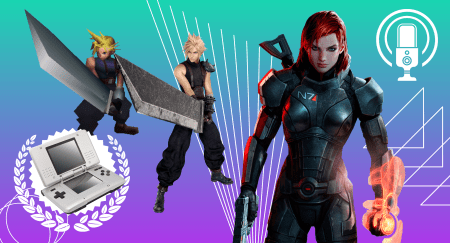Final Fantasy is one of the most recognizable names in gaming, an institution unto itself. Among the entries that comprise the series’ institutional greatness, Final Fantasy VII is, to many, both its magnum opus and an albatross, the weight of its legacy hanging heavy on its head.
Undoubtedly one of the most important video games ever created, the original Final Fantasy VII was so good, so monumental, that Square Enix has repeatedly sought to recapture its success—to mixed results. The publisher has expanded the lore and world of VII with numerous (generally poorly received) entries, all while openly contemplating the possibility of a ground-up remake. That remake was originally considered for PlayStation 2, teased via tech demo for the PlayStation 3, then finally realized for the PlayStation 4 with 2020’s Final Fantasy VII Remake.
Flash forward to 2024, and the second part of this three-part remake series, Final Fantasy VII Rebirth, has hit shelves. Does Rebirth justify its grandiose dreams, or does it crumble under the weight of impossible expectations?
(Editor’s note: This review focuses mainly on Rebirth’s combat and open world, and is spoiler-free.)
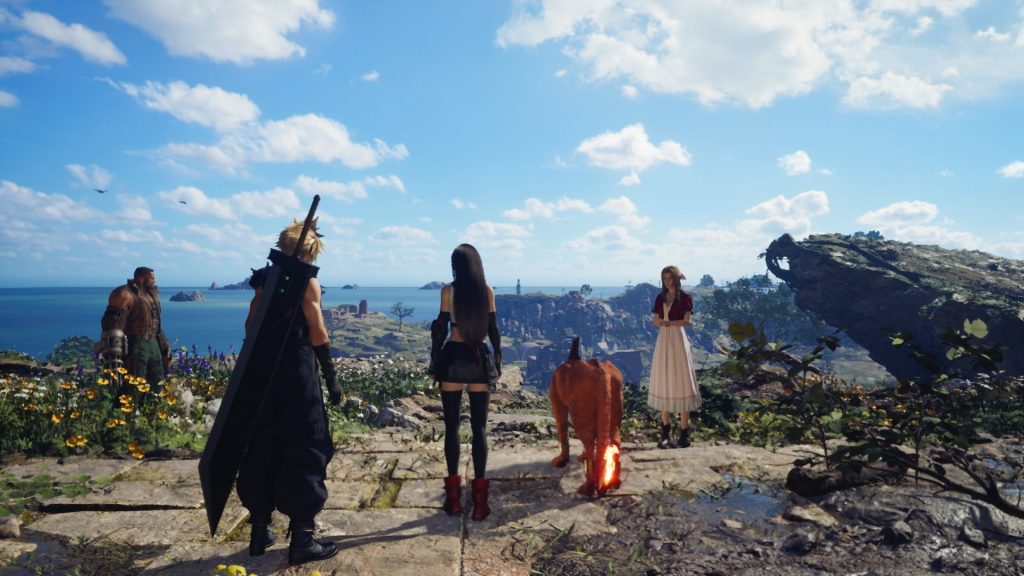
The Prelude
Before we dive in, a bit of context as it pertains to my playthrough and review:
Platform and Setup
- Final Fantasy VII Rebirth is (for now) exclusive to PlayStation 5.
- I played on a 1080p, 27-inch monitor screen instead of a television.
Performance
- At the time of review, there were two graphics options: Performance and Graphics. I gave each option at least five hours of play before settling on Performance.
- Performance mode was noticeably blurrier than Graphics mode, but not so much as to negatively impact my experience.
- As of patch 1.020, Performance now has two different options: “Sharp” and “Smooth.” (General sentiment appears mixed.)
- I did not encounter a single crash or bug throughout my playthrough, which now spans 130+ hours.
Completion Percentage
- I went for a “completionist” playthrough for my first run.
- This involved completing every open-world task, all side quests, and all VR combat challenges.
- I spent ~110 hours on the open world and main story, then another 20+ hours on endgame content.
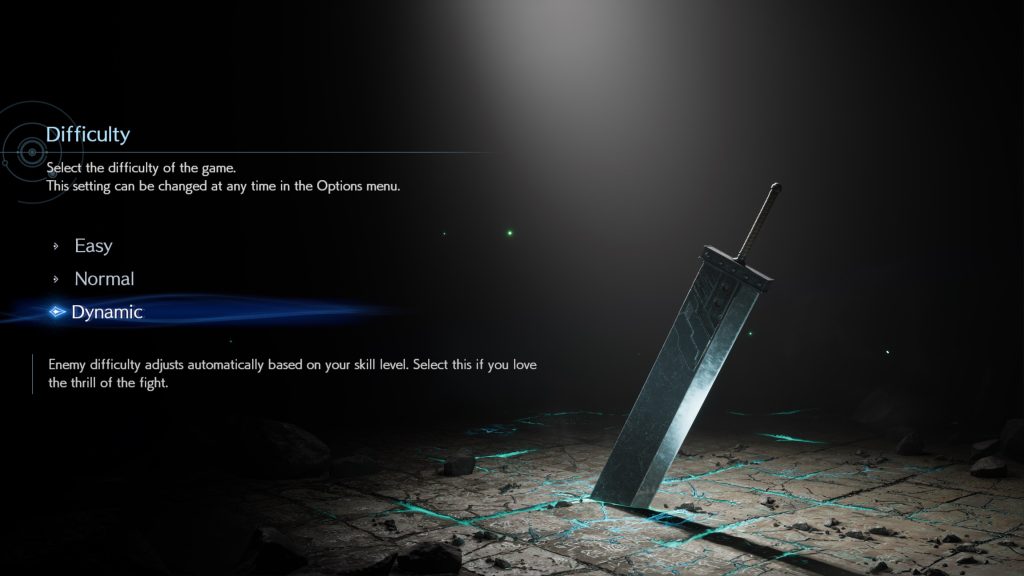
Difficulty Level
- Final Fantasy VII Rebirth offers three difficulty levels: Normal, Dynamic (which scales enemy levels to your own), and Hard (which you unlock after beating the game).
- I started my playthrough on Normal, then switched to Dynamic for more of a challenge, though I can’t say I noticed a difference.
- I haven’t completed the game on Hard Mode (yet).
Voice Over
- As a fluent Japanese speaker, I played with the Japanese VO. I also played with English subtitles, which are identical to the English dub.
Prior Final Fantasy Knowledge
- As a frame of reference, I have played the original Final Fantasy VII, and am reasonably knowledgeable about canonical events from the Compilation of Final Fantasy VII.
- I also keep up to date on developer statements through Square Enix’s Ultimania books.
- I wrote my review through the lens of someone who has played both Remake and the original VII, and my thoughts on the game’s story (and ending) are inextricably tied to that lens.
- That said, we’ll be sharing a broader set of perspectives (including those unfamiliar with the original VII) in a future Punished Podcast episode!
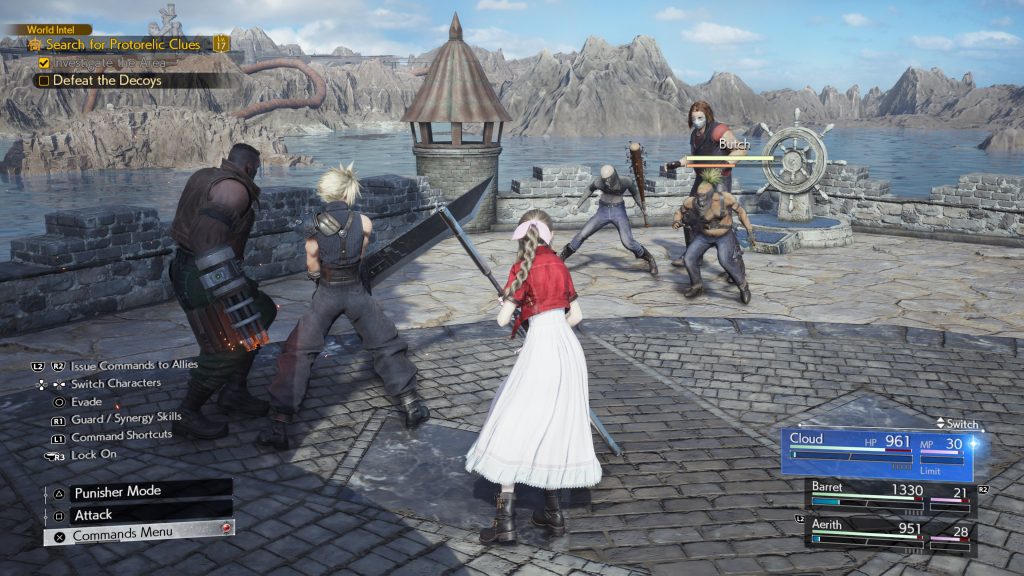
Let the Battles Begin!
Those familiar with Final Fantasy VII Remake or its DLC interlude, Episode INTERmission, will find the core combat of Rebirth familiar, but notably expanded. Complaints about aerial combat and the general behavior of AI-controlled party members have been specifically addressed, largely in the form of the new “Synergy” system.
Synergy Skills are a set of two-button inputs (guard + a face button) that let two characters perform an offensive or defensive move. This system essentially “patches up” weaknesses inherent to a given party member’s kit. For instance, in Remake, Tifa didn’t have an easy way to engage in aerial combat (unlike, say, Barret); in Rebirth, her Synergy Skills let a party member shoot her up to great heights to catch an aerial target, or across the battlefield to close the distance with an enemy.
Offensive Synergy Skills generally fall into these categories, providing a melee or ranged option for characters who typically specialize in the opposite. This seemingly small addition impacts combat greatly, making characters more well-rounded and flexible.
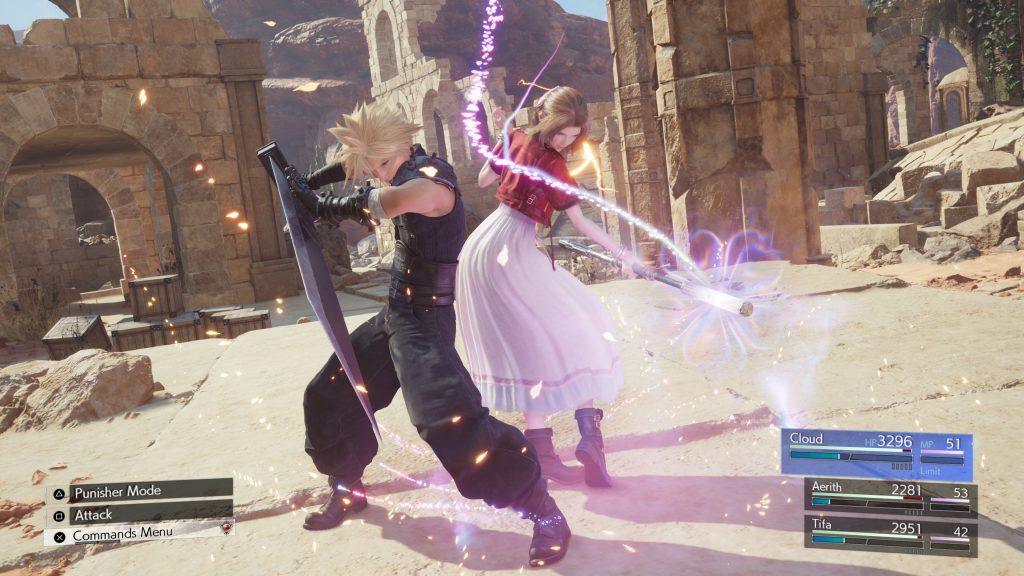
Then, there are Synergy Abilities. By executing ATB commands, such as Cloud’s Braver, you’ll build a “tick” of Synergy for that character. When two characters both reach a certain threshold of Synergy, they can unleash a devastating Synergy Ability that provides an added benefit, such as temporary unlimited MP, increased enemy stagger, or raised limit levels. This all culminates in a system that is, as the name implies, wonderfully synergistic, each mechanic building upon one another to incentivize the player to act aggressively yet strategically.
Synergy Skills build ATB, but also take a bit of time to execute—meaning you can activate a skill between two characters and then switch to the third for manual control. As you do so, you’ll build ATB faster than the AI’s default behavior, which in turn means more ATB commands, more ticks of Synergy, and more powerful Synergy Abilities. In short, you’ll be spending much less time using basic attacks, and more time building and executing exciting ATB commands.
Though powerful, Synergy Skills aren’t invincible. Positioning is as relevant as ever in Rebirth, and Synergy Abilities have limited invincibility frames, meaning you can’t just mindlessly build Synergy or spam attacks against enemies. The result is an elegant combat system that feels faster than Remake, without sacrificing any of its predecessor’s strategic integrity.
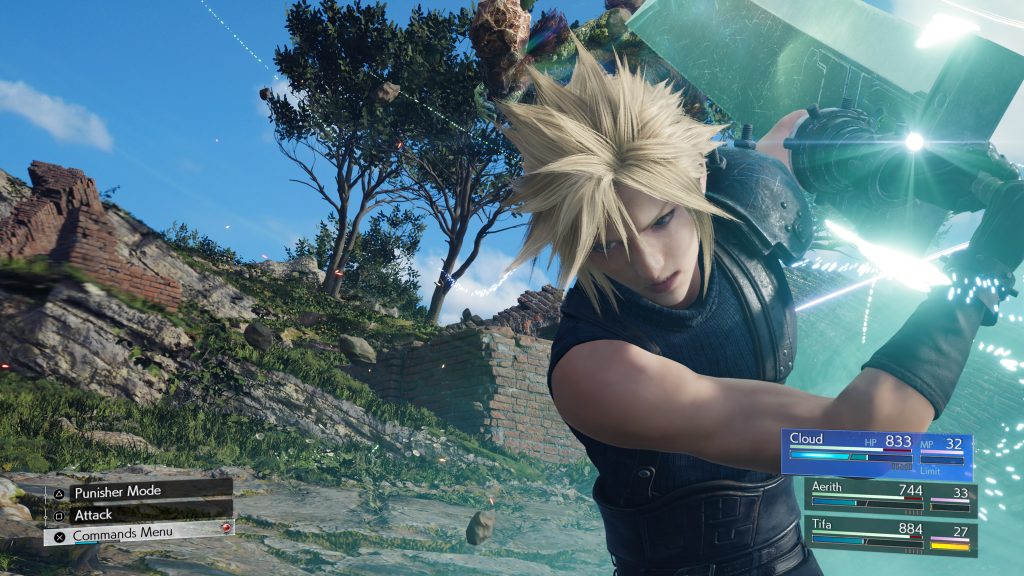
Those Who Fight Further
Character move-sets have been significantly improved in Rebirth, with streamlined ways to get and stay in the air. If you evade as Cloud and hold his basic attack, he’ll launch into the air—a maneuver that wasn’t possible in Remake. Other characters, meanwhile, now have basic attacks that were once ATB commands in Remake, expanding the options at their disposal.
Defensive options have also been greatly enhanced, in large part through Synergy Skills. These defensive skills range from the ability to tank ranged attacks to a generous dodge that grants a follow-up attack when timed correctly. And because Synergy Skills require two characters to work in tandem, activating a skill has the neat by-product of teleporting the assisting character out of harm’s way.
Adding to your defensive options is the ability to execute a perfect guard—a new addition to Rebirth. In Remake, moving was often superior to dodging, and blocking without a perfect guard mechanic felt a little rote. In Rebirth, however, these three options—dodging, guarding, or simply moving out of the way—all feel equally balanced and well-suited for different situations.
Dodging and blocking also accelerate your ATB bar—a small reward for mechanically oriented players. Given that lower-speed characters (like Barrett) tend to have poor dodges in Rebirth, perfect guard is a welcomed new layer to the defensive toolbox.
Enemy hitboxes and hurtboxes feel as precise as ever, and positioning matters just as much as it did in Remake. Synergy Skills can miss if you start them too far away from an enemy, and that goes for ATB commands as well (Limit Breaks, on the other hand, are a bit more generous). This occasionally can make for a frustrating moment when you execute an ATB command right as an enemy makes a run for it with a dodge or charge, but for the most part, whiffing on an attack feels (and I say this positively!) like a skill issue, as opposed to bullshit.
That isn’t to say there aren’t a few particularly tough enemies or painful attacks that are difficult to avoid, but I almost always felt that the onus was on me, and not the game.
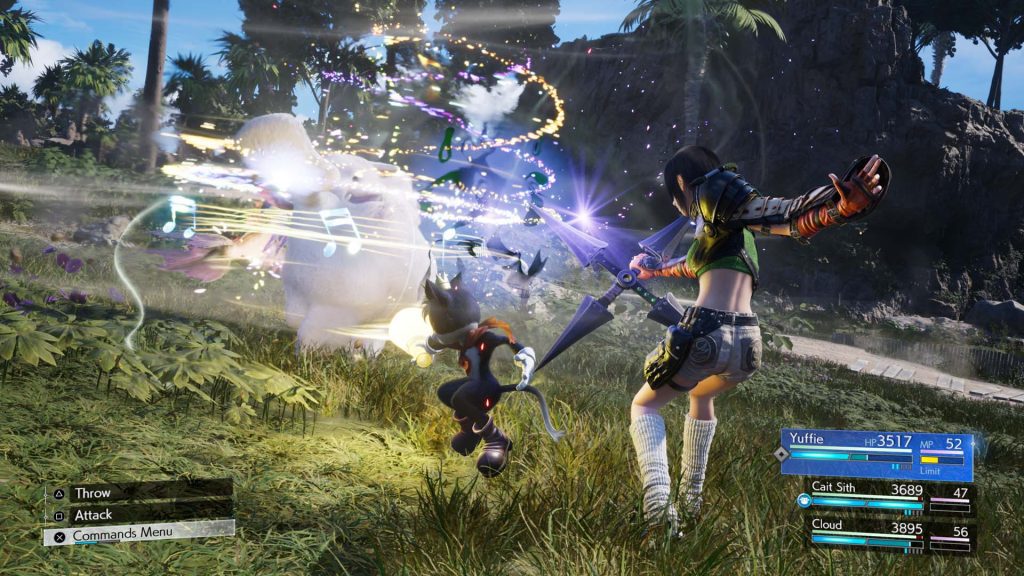
Those Who Fight (Even) Further
If it sounds like I enjoyed combat in Final Fantasy VII Rebirth, you’d be right. There are many intricate systems in the game, to the point that it can be challenging to capture them all in a single review.
Like in Remake, every character has unique tricks they can employ to speed up their combat. Tifa has the unique ability to block-cancel many of her attacks, and some of her basic combos cut down on the startup of certain ATB commands. Likewise, Barret’s Overcharge mechanic rewards players who can consistently time his active reloads. The depth of the combat system here is staggering, and it makes every character a joy to play and explore. If there is a downside, it’s that characters are almost too complex, and the game somehow has an overabundance of tutorials that still miss the mark in terms of actively being able to teach the player how things work.
That isn’t to say the strategic, RPG roots of the original Final Fantasy VII are lost in Rebirth. Materia builds and character upgrades are still present, and one of Rebirth’s biggest strengths is that it feels like you can win with build power, mechanical skill, or a combination of both. Especially once your cache of Materia grows, you can employ all sorts of powerful strategies. Yes, you can brute-force enemies with your god gamer dodge/parry skills, but using Assess on enemies reveals a wide variety of specific and unique methods to induce Stagger, letting you treat Rebirth much more like a traditional Final Fantasy game.
Rebirth’s combat truly feels like the best of both worlds, a masterful blend of exhilarating action-game combat with the tactical strategy and character-build intricacies of an RPG. The fact you can lean further into one side or the other depending on the strategy—or your personal taste—is exceptional, and at least on Normal/Dynamic difficulty, more than plausible. (Some of the harder combat challenges, as well as certain fights on Hard Mode, might necessitate more specific and narrow solutions.)
All this, and I haven’t even mentioned the new additions to the cast—Red XIII, Yuffie, and Cait Sith—who all occupy a specific niche that makes them a blast to play.
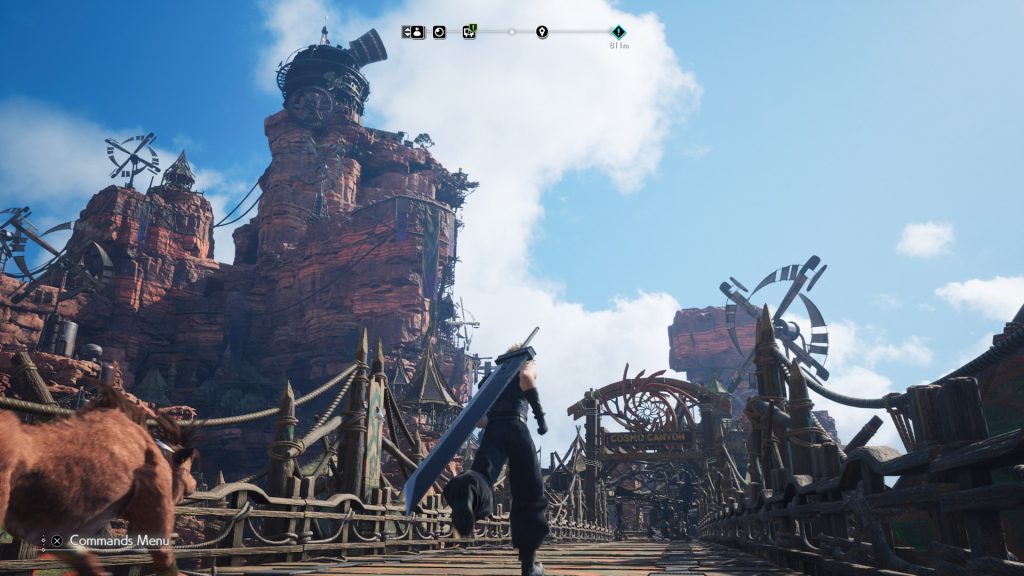
Overworld, Reimagined
Combat aside, the biggest change between Remake and Rebirth is that the former was a fairly linear experience—and Rebirth is certainly not. Emulating the original Final Fantasy VII, where the party unlocks the world map after escaping Midgar, Rebirth contains a “zoned” open world, with access to new regions becoming possible as the plot progresses.
The map does become afflicted with the “Ubisoft style” of open-world. There are towers to scale, Fiend Hunts to complete, treasures to find, and more—and those with the compulsion to check off every task might find their patience wearing thin.
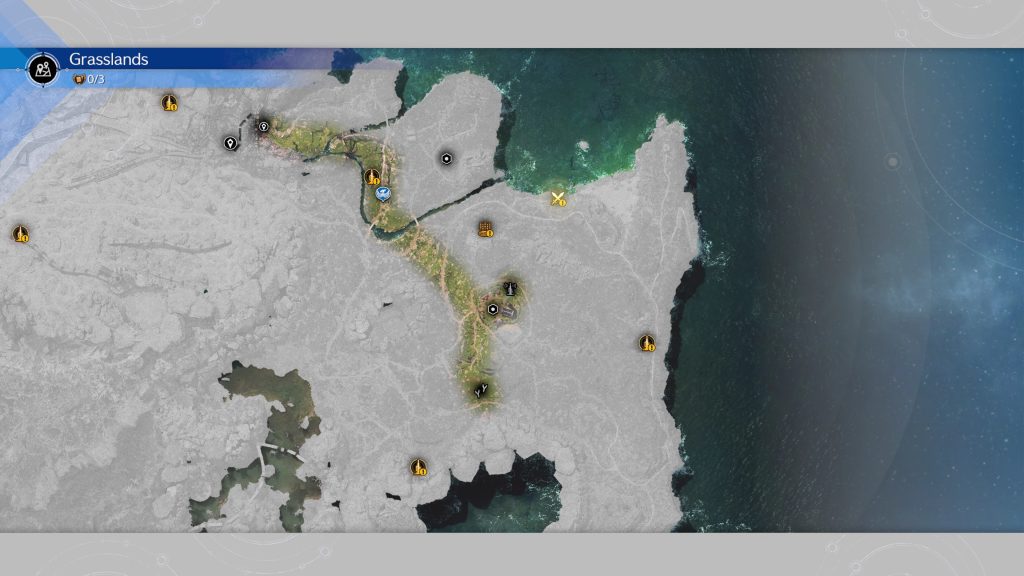
In hindsight, I’ve found the best way to enjoy Final Fantasy VII Rebirth is to pursue as many (or as few) side quests as you want, and not go all-out to 100% clear every region. HowLongToBeat places Rebirth at 40 hours if you beeline it for the plot, and I think doing so would be a disservice to the quality of many of the game’s side quests. That said, definitely don’t feel the need to commit the 120+ hours required for a completionist run. This is especially true because beating the main scenario unlocks several quality-of-life improvements that make replaying (and 100% clearing) content much faster than on your initial playthrough.
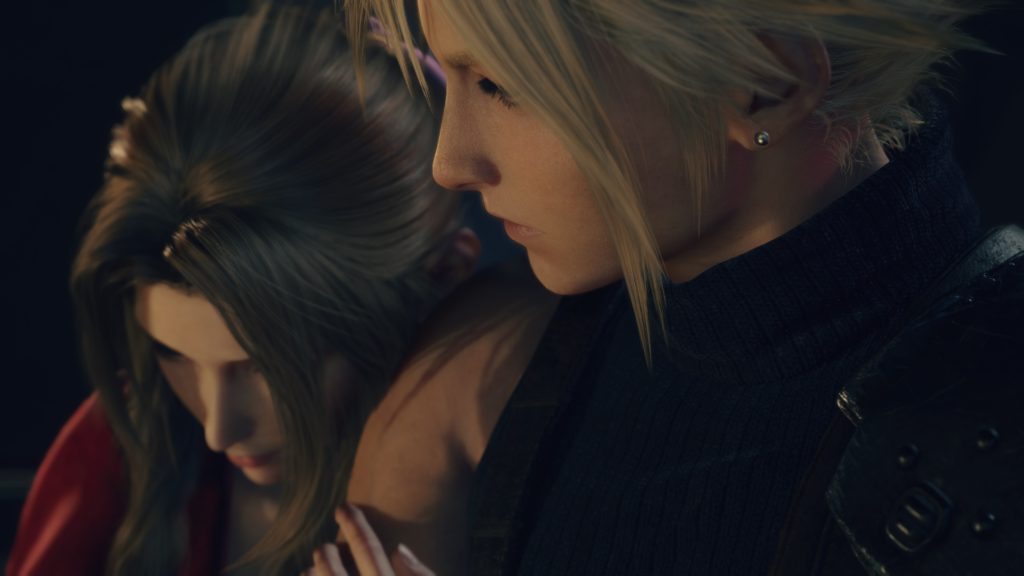
On Our Way
Another notable expansion in Rebirth is its affinity system, which tracks the relationship between Cloud and various party members. Side quests typically have an associated party member, and completing that quest will significantly boost that character’s affinity with Cloud.
This system existed in Remake but was more barebones. In Rebirth, however, the focus is front-and-center. The character with the highest affinity with Cloud gets a special little scene with him in Chapter 12, so if you don’t want to spend tens of hours replaying a story-driven game, I’d recommend—at minimum—pursuing the side quests with the party member whose affinity you want to maximize most.
Rebirth features a crafting system as well, but I found little need to engage with it until the endgame. Gil and items are found plentifully throughout the game, as are rest stops. Resource attrition isn’t a serious concern (at least on Normal or Dynamic difficulty), and I never found myself wanting for resources, healing items, or equipment during my playthrough.
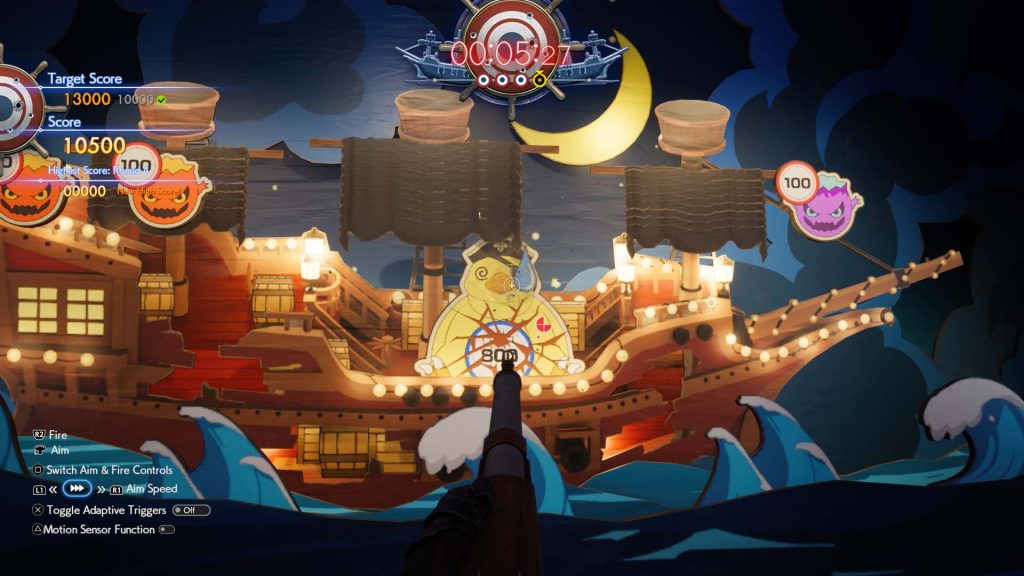
If there is a pain point in Rebirth’s core flow, it’s the presence of mandatory “busywork” distractions—puzzles, riddles, or tasks that require little to no thought but take up a disproportionate amount of time simply due to the speed at which they move. Numerous times, Cloud has to drag an object from one side of a room to another just to unlock a door. There are several “on-rails” segments where Cloud has to slowly amble in a predetermined path for seemingly no reason other than to force the player to take in the scenery or perhaps listen to some clumsy, direct-exposition-heavy dialogue. Some segments require the player to pass a mini-game to proceed, which can be frustrating and a momentum-killer.
Overall, it’s difficult to put a price on the feeling of “open-world bloat.” While skipping tasks can create FOMO, they rarely are necessary to progress and hold little bearing over the actual narrative. The combat was enjoyable enough for me to not feel worn out by the menagerie of tasks, and side quests are largely improved from Remake, especially with the specific care taken to involve other party members. The addition of chocobos makes traversal fast enough, and I never found any region to be especially confusing or difficult to navigate. (That said, Chapter 9 seems a point of contention among players, as it deals with elevation changes and pseudo-inaccessible areas that aren’t cordoned off on the map in visually distinct ways.)
Rebirth also does well to mitigate that FOMO in several clever ways. Unlike in Remake, weapons aren’t missable, as they can be purchased in shops if you fail to find a specific purple chest. While completionists may suffer from the excess of activities, players who remember that they can always come back to things later will find their experience enhanced by the ability to ignore the progress bar.
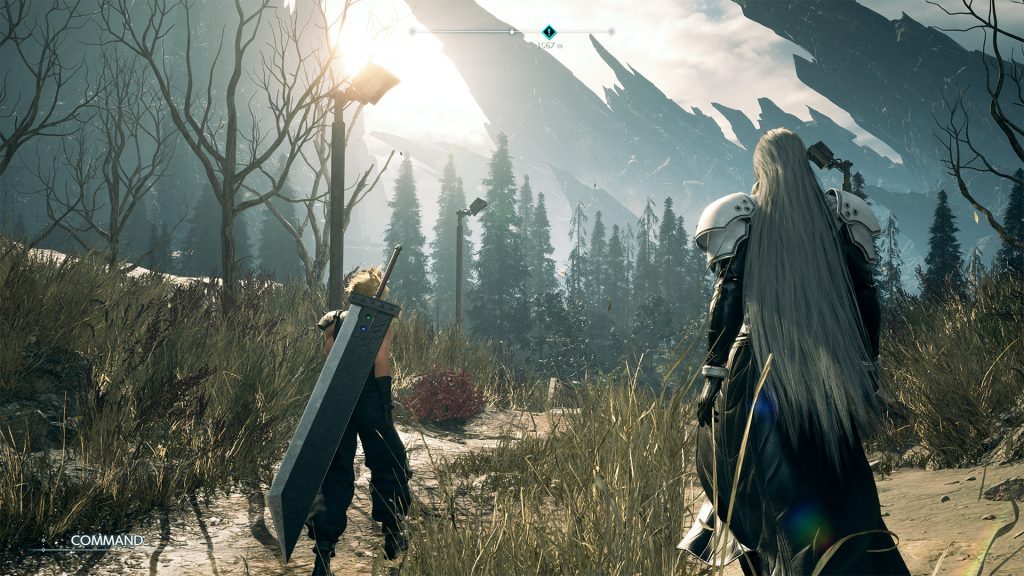
In Search of the Man in Black
Story-wise, Rebirth picks up where Remake left off—notably, with a notable, significant divergence from the end of Act 1 of the original Final Fantasy VII.
As a remake, it’s nearly impossible to get deep into the weeds of the narrative of Rebirth without acknowledging the original game, and we’re hoping to produce some spoiler-cast content on this game in the coming weeks. For those who are coming into this game with no priors, I imagine the story of Rebirth feels quite different from those who are intimately familiar with the source material.
An in-depth narrative exploration will likely come in the coming weeks, but overarchingly, I was mostly pleased with the presentation of the story, including any changes, minor or major, that accompanied this “retelling” of Final Fantasy VII Act 2. The largest flaws of this story are in its overall legibility from the perspective of emotional or thematic coherence, and these elements are mostly constrained to the final hour or two of the game. Remake introduced the idea of a “meta-narrative,” and Rebirth continues this trend but, for me, added significant layers of confusion.

By the end, I couldn’t help but feel this sinking feeling that the creators of this project want to have their cake and eat it too—a sort of anthology, creation-by-committee approach that is trying to dip its toes in as many pools as possible to find the most satisfying one instead of committing to a singular vision. But this particular feeling didn’t appear for me until the final chapters, and it’s possible—perhaps even likely—that this is one of those situations where the more you love the original, the more you worry about deviations and the like.
The order of some events has been shuffled around compared to the 1997 classic, with one area having much more presence now, having been an optional area before. I found that most of these deviations served the narrative well; this new, added section was a particular highlight, despite being almost entirely new content.
As mentioned before, Rebirth features an affinity system, and the increased focus on side characters is welcomed. I remember Remake having more ambient dialogue within the party than in Rebirth, which is a shame, but overall the relationships between Cloud and the rest of the party feel rich, with a great balance of humor and pathos.

Final Thoughts: Judgment Day
Somehow, despite shouldering almost impossible expectations, Rebirth is a wonder: a marvel of a game that merges the old and nostalgic with the ever-increasing burdens of modern gaming sensibilities and technical prowess.
The combat is incredible, fine-tuned to a sharp edge, and a noticeable improvement over its predecessor. Rebirth also justifies its shift toward open-world gameplay with a breadth and depth of content that ranges from simple tasks to deeply involved side quests. For the most part, the narrative and performances are some of Square Enix’s finest work in recent years, treating serious matters with the respect they deserve while maintaining the often campy and joyous feeling that was the heart and soul of the original game.
Despite a turbulent ending that almost feels more tailor-made to invite speculation than to provide a coherent narrative, Final Fantasy VII Rebirth is a high watermark of the genre. Its true legacy, however, will ultimately be determined by the final part of this exciting trilogy.
Score: 9.5/10
Miscellaneous Notes
English Localization
- As noted before, I played with Japanese VO / English subtitles. I hate to personally bag on localizations, especially having been involved in such things in the past, as I feel many people misunderstand the process. With that being said, there were numerous times when it clearly felt like the tenor and tone of lines conveyed a different kind of feeling and emotion between the two scripts.
- Aerith and Sephiroth in particular tend to speak in vague but loaded terms.
- I understand how difficult of a job the localization must have been, but some emotional nuances were lost, with the English script sometimes giving off a different (or even opposite) impression than the Japanese script.
- I’ll probably touch on the VO more in our spoiler podcast episode, but overall, it was not my favorite localization.
Voice Direction
- On the other hand, I did go back and watch good chunks of the game’s English cutscenes on YouTube, and I felt like the voice direction was notably improved compared to Remake.
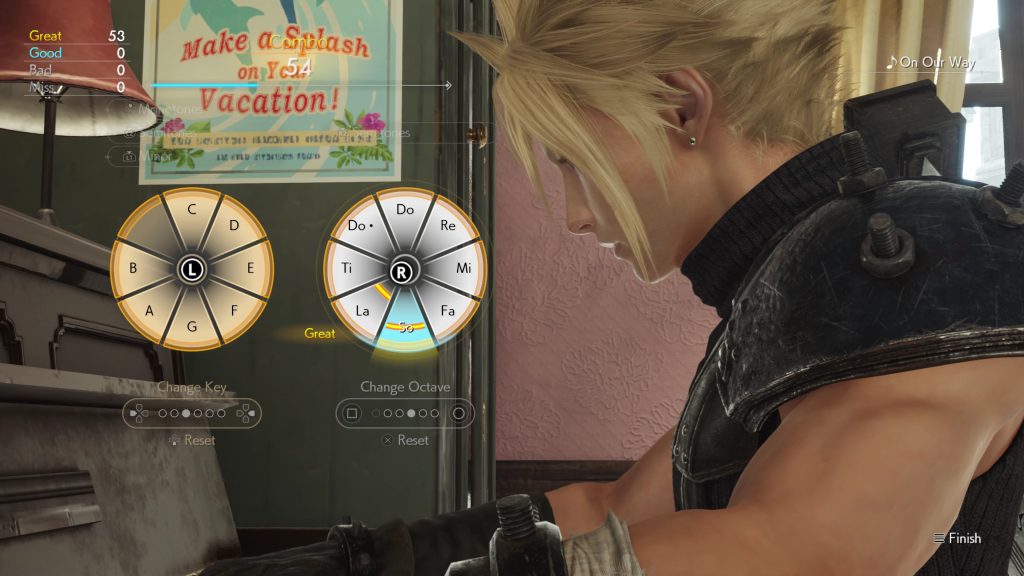
Mini-Games
- My favorite mini-games: playing the piano, chocobo racing, and the return of the box-destroying mini-game. I’m sorry: I didn’t care for Queen’s Blood!
- My least favorite mini-games: Moogle Mischief and Crunch Off. Thankfully, Moogle Mischief offers a more lenient difficulty, and Crunch Off is entirely optional.
Combat
- Favorite character in combat: Tifa. Building the stagger meter to absurd levels is a ton of fun.
- Least-favorite character in combat: none of them! I know, a cop-out answer, but I genuinely think that if you spend the time to learn every character, you’ll realize that all of them are absurdly strong in their own ways. Cait Sith is probably the hardest one to wrap your head around, I’ll admit.
- Favorite ATB ability: Tifa’s Focused Strike.
- Favorite new ATB ability: Yuffie’s Doppelganger. I mean, look at this thing.
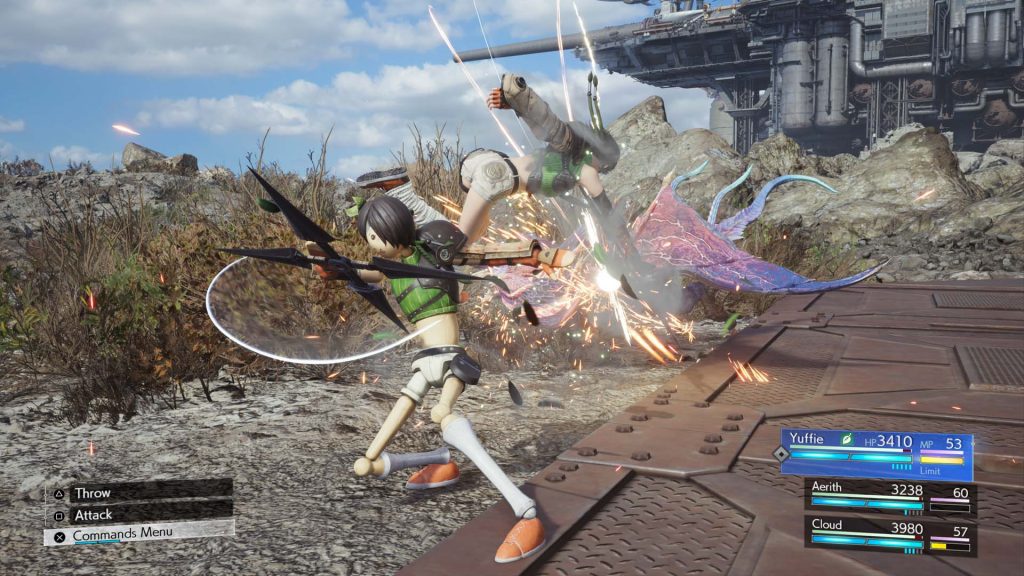
Glow-Ups (and Downs)
- Biggest glow-up compared to the original: Yuffie! I really adored her character this time around, and she is much more intertwined with the story at large. Also Esther, but to be fair, in the OG she’s described as “kind of funny looking.”
- Biggest glow-down: Maloceros. I can’t believe we didn’t get to fight the Heavy Tank (aka Tankceratops). I’m devastated. Truly.
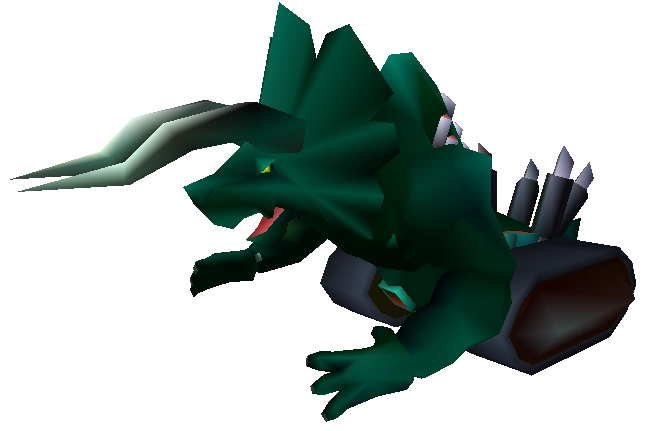

Huge video game, comic book, and anime fan. Spends way too much time watching things he doesn’t like. Hates Zack Snyder. Mains Falco.








